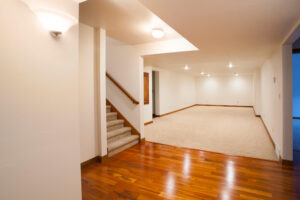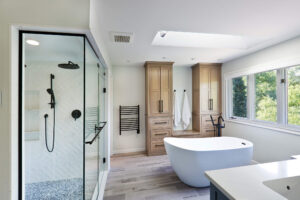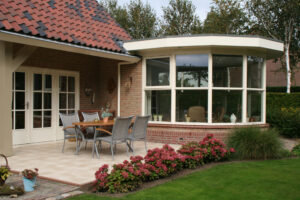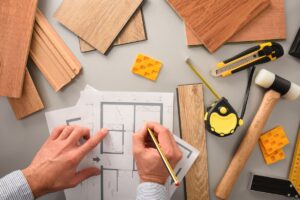Today, life expectancy worldwide is more than 70-years-old, and for Americans that number is nearly 80. That means more families are looking for ways to keep mom and dad safe as they get older.
According to an article from CNN, renovations for the elderly are becoming quite common:
“Renovations designed with the elderly in mind is the fastest-growing segment of the remodeling industry, said James Lapides of the National Association of Home Builders, a home builder and remodeler trade association.”
Evidence suggests that elderly people have a better quality-of-life when they’re able to remain in their homes or with family, so making renovations for seniors is a topic that many families must discuss at some point.
Questions to Ask as You Plan Your Renovations
Confronting aging is a difficult process, but there are some simple ways to adapt your home for an elderly family member without making significant changes to the residence. In fact, some changes are virtually invisible and blend in with your current architecture and décor.
According to caring.com, here are some questions you’ll want to discuss as you plan your renovations.
- Do hallways and doorways provide enough room for walking aids like wheelchairs and walkers?
- Is the home close to a hospital or medical facility for family members in poor health?
- Does an extra bedroom exist for an aide or additional caregiver?
- Will the elderly family member remain somewhat independent in the home?
Answering these general questions can help you decide on the specific projects that will offer the most valuable modifications.
Simple Renovations for Seniors
Major renovations can make a big difference in making a home accessible and safe for the elderly, but there are also a variety of enhancements you can make even if you’re working with a limited budget.
For example, CBS News reveals:
“In homes where it’s even darker, white sticks motion-sensing lights by each step to show where to aim your foot. They’re less than $15 for a two-pack and run on batteries, so no rewiring is needed.”
Other simple features are as easy as installing signs to help a family member remember to shut things off or turn things on.
You can also take a quick look at the carpets in your home. Do any of the rugs have tassels? Are the rugs secure on the floor or do they move around? You might consider making some switches to carpeting and flooring that’s easy for someone who shuffles along to walk without tripping.
Another very easy option that’s also budget-friendly is changing the door handles to lever style grips rather than traditional round knobs. It’s easier for people with arthritis and motor control issues to open doors with a lever.
Retaining Style and Décor in Your Home
One of the fears that you may have when you start to adapt your home for an elderly parent or relative is that the home will start to look like a hospital or medical facility.
In fact, it’s possible to camouflage some changes to your home that will greatly aid mobility while making sure your home remains beautiful.
For example, you might need to enlarge the door to the room where the elderly person will sleep. Those large doors that look like they belong in a hospital can look quite institutional. Instead, you might consider stylish double doors that allow access for anyone in a wheelchair or who must use a walker.
Even if someone isn’t using a wheelchair or a walker today, it’s important to consider these changes before the need actually arises. Aging Care recently interviewed a family who needed to confront “aging in place” and home modifications:
“He’s not in a wheelchair now, but we don’t know what the future holds, so we wanted to prepare for that possibility.”
Aging in Place: Changes for the Bathroom
One of the most important rooms where you might want to make updates is the bathroom. It’s tough for the elderly or anyone with a physical disability to accept that they must be accompanied into the bathroom for assistance.
The AARP recommends focusing on the bathroom when making the first changes in your home.
“Having a first-floor full bathroom is “crucial,” … If you don’t currently have one, it might seem like a large expense. But compared to installing an elevator or chair lift, it could be more economical.”
Now, you might be thinking that the bathroom will need ugly, industrial-style bars and other hospital-like additions, but you can get creative with changes to your bathroom. For example, you might choose to install seating in the bathroom that’s covered in decorative tile.
The shower will look like a trendy spa rather than a shower meant for someone with mobility issues who might be unable to safely stand while taking a shower.
Need to Update Your Home for an Elderly Family Member?
If you’re ready to get started on your renovation project, you’ll want to download our eBook: Seven Questions to Ask When Choosing a Remodeler in the Indianapolis Area.





